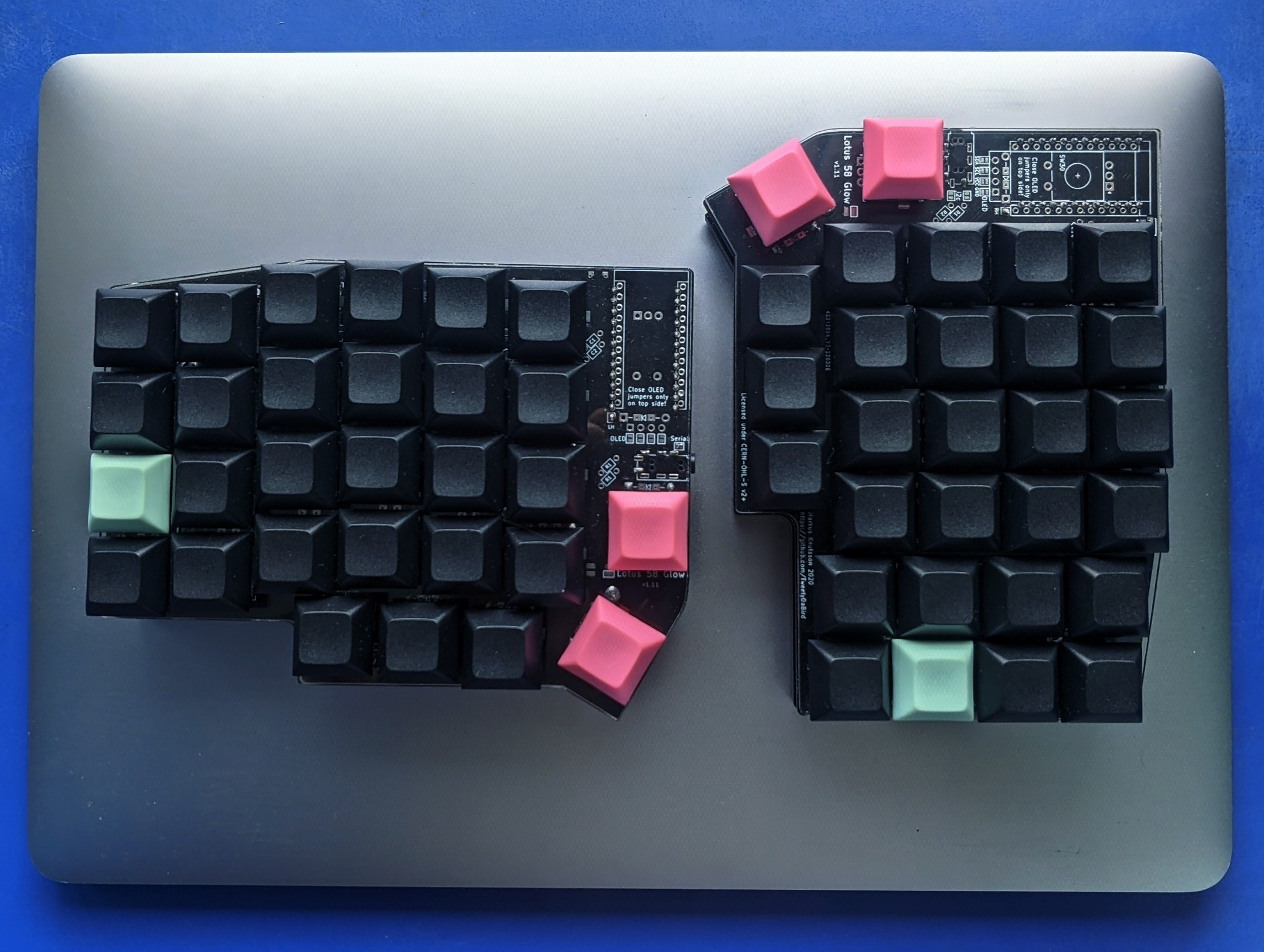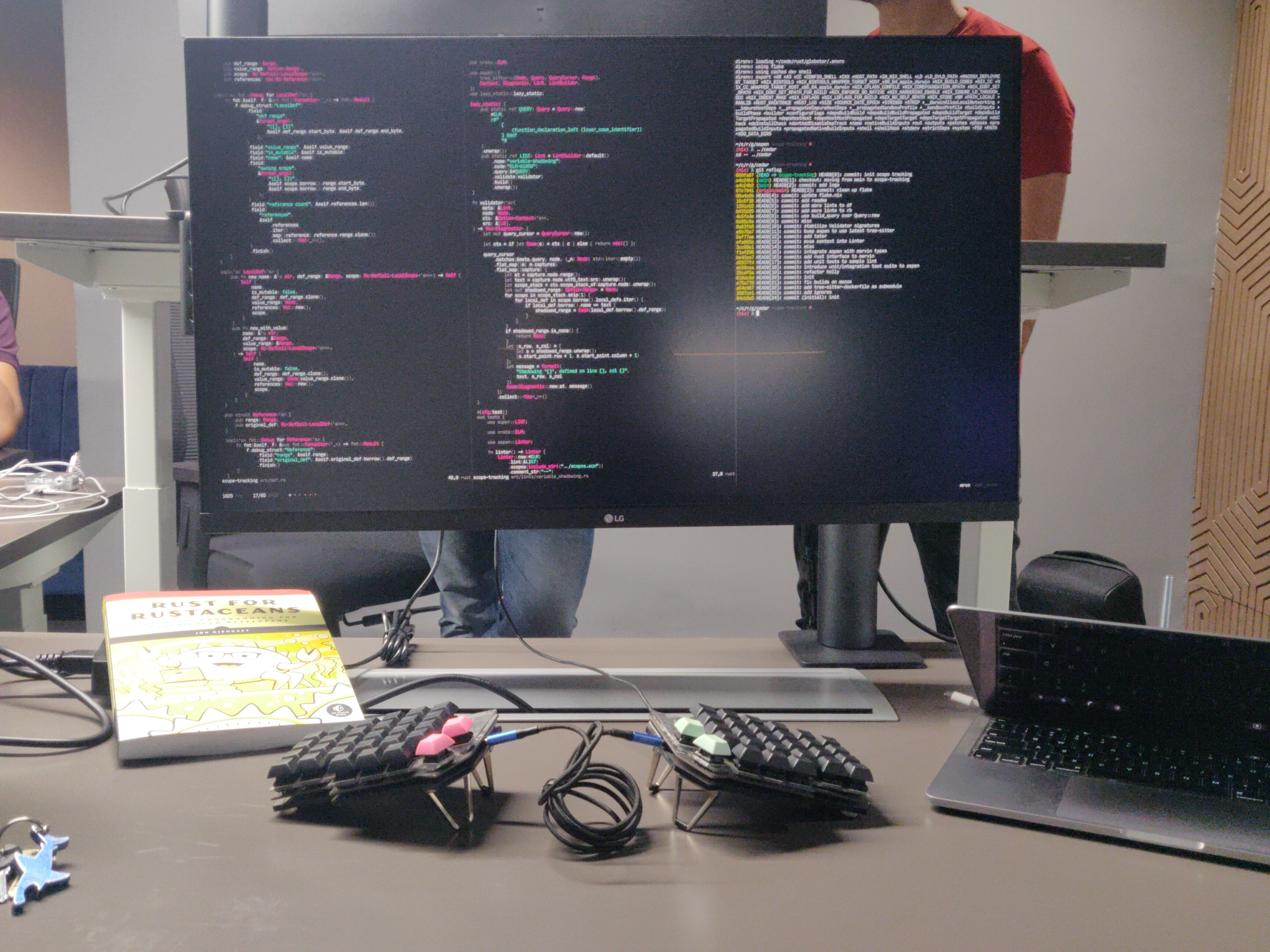Lotus58
Earlier this month, I decided that I would laugh at Indian customs in the face by building a split-ergo mechanical keyboard from scratch rather than purchasing a Moonlander.

Sourcing the parts
If you, like me, live in India, you might find this section useful. My approach to finding parts:
- Check reputed, local online stores
- Check physical hardware stores
- Import the part
PCBs
This was by far the hardest component to procure. Fabrication services have certain capabilities. Capabilities are the limitations of a fabrication service. For example, a service may be capable of drilling holes no smaller than 0.3mm in diameter. Most sites have a verification process to check if their capabilities meet your design’s requirements. I tried a few local PCB fabrication services:
- Lion PCB: Capabilities did not meet my requirements
- PCBPower: Capabilities did not meet my requirements
- Circuitwala: Capabilities did not meet my requirements
I settled for JLCPCB, a Chinese service. PCBs themselves were 16 USD, shipping was another 35 USD, and customs was another 3.5K INR (ouch).
Case material
I don’t really have a case for the Lotus58, it is more of a “plastic sandwich”. I purchased acrylic plates from Robu. Cheap, fast, solid, and customizable. I cannot recommend Robu enough. A full set of plates (2 top plates and 2 bottom plates) cost me about 500 INR. I also bought a pair of laptop height raisers on Amazon to create a budget tenting setup.
Electronics
You’ll need a few rather specific electronic components such as hotswap sockets and TRRS mounts, the rest are commonly available:
- Hotswap sockets: StacksKB
- TRRS mounts (PJ 320A): StacksKB
- Diodes (1N4841): StacksKB
- M2 screws: StacksKB
- M2 spacers: ThinkRobotics
- Arduino Pro Micro: Robu
I skimped out on optional components such as OLEDs and rotary encoders.
Switches and Keycaps
Arguably the most fun part of the build:
- Gateron Oil King switches: Rectangles
- DSA blanks: Meckeys
Building the keyboard
The the build is extremely straightforward. Through hole components are easy to solder. Be wary of component placement and orientation. Check thrice, solder once. Few debugging tips:
- if a single key does not actuate, check the hotswap for poor soldering (reflow the joint), and the switch pins for deformation during installation
- if an entire column or row activates on a single key-press, a connection has been shorted
- if only some of the keys on a given row actuate, a diode has been soldered on the wrong way
The typing experience
I decidede to give QWERTY the boot and learn Colemak along with the new keyboard. The first few weeks were terrible because I could neither type QWERTY nor Colemak, but I got the hang of it pretty quickly. Typing websites do help, but it is best to simply use it in your daily workflow. No site can help you get accustomed to the various things you use your keyboard for such as switching windows or navigating vim/tmux.
Colemak
Alt layouts such as Colemak are definitely worth it. I find that Colemak reduces finger movement a lot, a good portion of the keys on the left hand are the same as QWERTY, it is fairly easy to pick up as well.
Vim
Using an alt layout means most programs with keyboard shortcuts are
not going to work as expected, HJKL on vim for movements
being one of them. I took the short route out by creating a new layer
with arrow keys on the home row:
default homerow:
H N E I
"nav" layer:
< v ^ >The remaining commands in vim are largely mnemonics. Navigating with home-row arrow keys also means that I can use “HJKL” globally, to scroll a website, for example.
Cutting down to 34 keys
A couple months into my ergo journey, I realized that I could get
away by moving my fingers even lesser. I moved modifiers such as
Super, Ctrl, Alt and
Shift to the home-row as QMK Mod Taps. The rest of the keys
are cleverly placed in layers, not too much unlike the Miryoku layout.
Even for someone that writes Rust (a symbol-heavy grammar), I find
34-keys to be sufficient.
Conclusion
I have been bitten by the ergomech bug.

I'm Akshay, programmer and pixel-artist.
I write open-source stuff to pass time. I also design fonts: scientifica, curie.
Send me a mail at [email protected] or a message at [email protected].